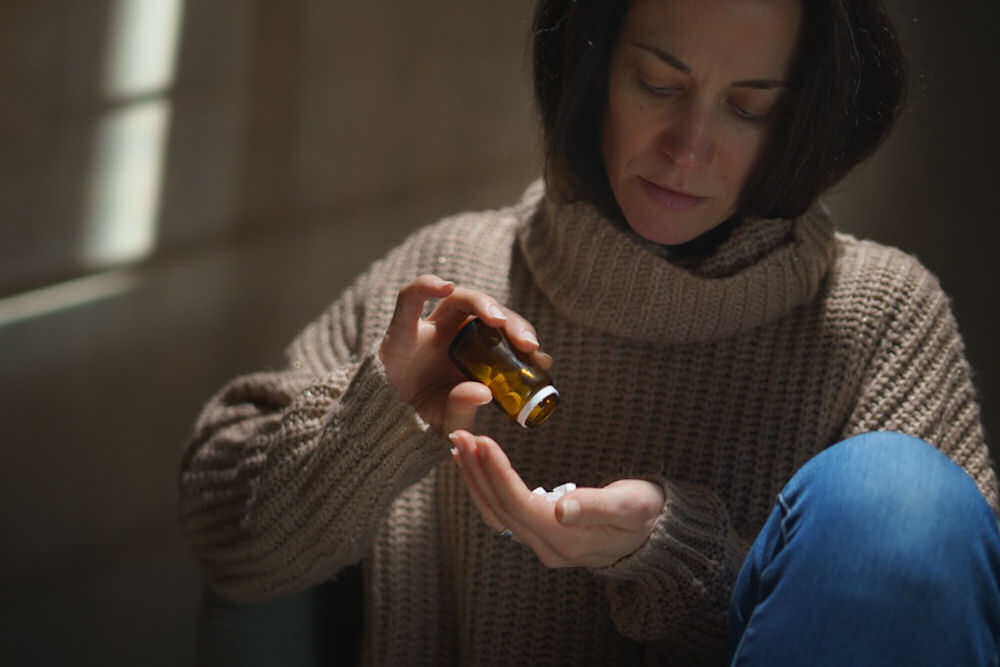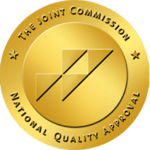Addiction comes in all shapes and sizes. One of the most common addictions is muscle relaxer addiction. Some may also refer to these as pain pills. Those who suffer from this sort of addiction require individualized approaches to addiction treatment. Treatment for addiction is not the same for everyone, especially those who suffer from muscle relaxers.
What are Muscle Relaxers?

Muscle relaxers can be prescribed as either short-term or long-term medications, depending on the patient’s condition and needs. Muscle relaxants can be taken either orally or topically as creams or gels. Common side effects of muscle relaxants include drowsiness, fatigue, dizziness, nausea, and dry mouth.
Short-term muscle relaxers are usually used to treat acute pain that has been caused by an injury or strain, while longer-term use is more often prescribed for conditions such as multiple sclerosis (MS), cerebral palsy (CP) or spinal cord injuries. Muscle relaxers are also sometimes prescribed for tension headaches, fibromyalgia, and other chronic pain conditions.
There are different kinds of muscle relaxers that can be used to treat a variety of conditions and pain. These medications may be prescribed by a physician or purchased over-the-counter (OTC). Common classes of muscle relaxers include:
- Benzodiazepines
- Cyclobenzaprine
- Carisoprodol
- Metaxalone
- Baclofen
- Tizanidine
Benzodiazepines, also known as “benzos”, are a class of medications primarily used to treat anxiety and insomnia. They work by depressing the activity of certain brain chemicals that control mood and emotions. Although they may be helpful in treating acute episodes of anxiety or insomnia, they should only be taken for short periods of time, as longer-term use can lead to physical dependence and addiction.
Commonly prescribed benzodiazepines include diazepam (Valium), alprazolam (Xanax) and lorazepam (Ativan). In addition to treating anxiety and insomnia, some benzodiazepines are also used to treat seizure disorders, muscle spasms, and alcohol withdrawal. However, they are not recommended for long-term use due to the risk of physical dependence and addiction.
Cyclobenzaprine is a muscle relaxant medication that is used to treat spasms, cramps, and other types of pain caused by conditions such as fibromyalgia, osteoarthritis, multiple sclerosis, tendonitis, bursitis, low back pain and tension headaches. Cyclobenzaprine works by blocking the action of certain nerve signals and reducing the activity of muscles.
It is a short-term treatment that should not be used for longer than three weeks as it can cause dependence, tolerance, withdrawal symptoms or rebound pain if used too frequently. Common side effects include dizziness, drowsiness, headaches or stomach upset. Combining cyclobenzaprine with alcohol could result in more of a likelihood for addiction.
Carisoprodol is a skeletal muscle relaxant that acts as a central nervous system depressant. It works by blocking nerve impulses (or pain sensations) that are sent to the brain. Carisoprodol is used together with rest and physical therapy to treat injuries and other painful musculoskeletal conditions.
This muscle relaxant is usually taken for only a short period of time (2-3 weeks) and should not be used for longer than prescribed. Common side effects of carisoprodol include sleepiness, dizziness, and headache. Serious side effects may include drug dependence or abuse, liver damage, and withdrawal symptoms if stopped abruptly.
Metaxalone is a muscle relaxant that is prescribed to treat pain, painful musculoskeletal conditions and other types of discomfort. It works by blocking nerve impulses (or pain sensations) that are sent to the brain. Metaxalone reduces inflammation and helps reduce muscle spasms, enabling you to move more easily and with less pain. Metaxalone is usually taken orally, with or without food. It may take up to three weeks for someone to feel the full benefit of this muscle relaxant.
Baclofen is a muscle relaxer that is commonly used to treat muscle spasms and stiffness. Muscle spasms and stiffness are typically caused by multiple sclerosis, spinal cord injuries, and other neurological disorders. Balofen works by affecting the nerves that control how the muscles contract or relax.
By blocking certain nerve signals, baclofen can help reduce muscle pain and improve movement in people with multiple sclerosis or spinal cord injuries. It is available as a tablet, capsule, liquid, and injection. Common side effects of baclofen include dizziness, drowsiness, headache, and nausea. More serious side effects can occur with long-term use and can include liver problems and seizures.
Tizanidine is a medication used to treat muscle spasms. It belongs to a class of medications known as centrally acting α2-adrenergic agonists and works by blocking nerve signals in the brain and spinal cord that cause muscles to contract. Tizanidine can help reduce or relieve muscle spasms due to conditions such as multiple sclerosis, back or neck injuries, and certain other conditions.
It is available in tablet form and can be taken with or without food. Tizanidine can cause drowsiness, dry mouth, and dizziness; therefore it should be used with caution when driving or operating dangerous machinery. Other side effects include nausea, weakness, constipation and blurred vision. Taking this particular muscle relaxer can lead to addiction, so it is important to take only the prescribed amount and not exceed the recommended dosage.
What Classifies as a Prescription Drug Addiction?
Prescription drug addiction is when someone uses prescription drugs in ways other than prescribed, for the purpose of achieving an altered mental or physical state. This type of substance abuse includes taking more doses of the drug than prescribed, taking it for longer periods of time than instructed, and using multiple medications at once.
It can also involve taking the drug for non-medical reasons, such as getting high or attempting to self-medicate emotional problems. Prescription drug addiction can have dangerous effects on physical and mental health, leading to organ damage, heart issues, anxiety and depression, and even overdose.
Muscle relaxer addiction presents with many signs and symptoms, both physical and psychological. The most common physical signs of muscle relaxer addiction are increased tolerance to the drug, cravings for more of the drug, excessive sedation, dizziness, impaired coordination or balance, breathing difficulties such as shallow breathing or slowed respiration rate, and dilated pupils.
Psychological signs of addiction to muscle relaxers can include an increased preoccupation with the drug or a “high” feeling when using it, as well as irritability and hostility when not taking the drug. Other psychological symptoms may include difficulty concentrating, changes in mood, feelings of confusion or disorientation, and memory problems. Muscle relaxer addiction can also lead to insomnia or extreme sleepiness when the drug is not taken, as well as paranoia and other mental health issues.
The withdrawal symptoms associated with muscle relaxer addiction can vary depending on the individual, how long they have been using the drug, and how much of the drug they were taking. Some common withdrawal symptoms include the following:
- Anxiety
- Restlessness
- Insomnia
- Nausea
- Vomiting
- Sweating
- Tremors
- Muscle pain
- Muscle cramps
- Headaches
- Dizziness
In more severe cases, addicts may experience seizures or even hallucinations.
These symptoms can last anywhere from a few days to weeks and in some cases may take months to subside. It is important for those suffering from muscle relaxer addiction to seek professional help as withdrawal can be very dangerous without proper medical supervision. A detoxification program monitored by healthcare professionals is the safest way to overcome dependence on muscle relaxers.
How Common is Muscle Relaxer Addiction?
Muscle relaxer addiction is becoming more and more common in recent years due to the increased availability and use of medications. Many people are unaware of the dangers associated with abusing muscle relaxers, especially when they are used without proper medical supervision. People who become addicted to muscle relaxers may experience serious physical, psychological, and social consequences as a result of their addiction, including tolerance, overdose, and death. The withdrawal symptoms associated with muscle relaxer addiction can also be quite severe.
What Kind of Treatment Options are Available for Muscle Relaxer Addiction?

Other treatment methods for muscle relaxer addiction include the following:
Get Over Muscle Relaxer Addiction With Westwind Recovery®
Addiction isn’t the end of your story. Many individuals throughout the world deal with muscle relaxer addiction. At Westwind Recovery® we offer comprehensive treatment methods to help those struggling with addiction to muscle relaxers. If you or a loved one are interested in finding out more, you can contact us here.

Dr. Deena is the Chief Clinical Officer of Westwind Recovery®, an award-winning outpatient treatment center in Los Angeles where she oversees the clinical and administrative program and treatment methods. Dr. Deena is a doctor of psychology and licensed clinical social worker since 1993. LCSW #20628. Originally from the East Coast, Dr. Deena has worked running treatment centers, worked as a therapist in psychiatric hospitals as well as school settings and currently has a thriving private practice in the LA area. Dr. Deena has appeared regularly on the Dr. Phil Show as an expert since 2003. She has also been featured on many other TV shows, podcasts and has contributed to written publications as well as podcasts.



